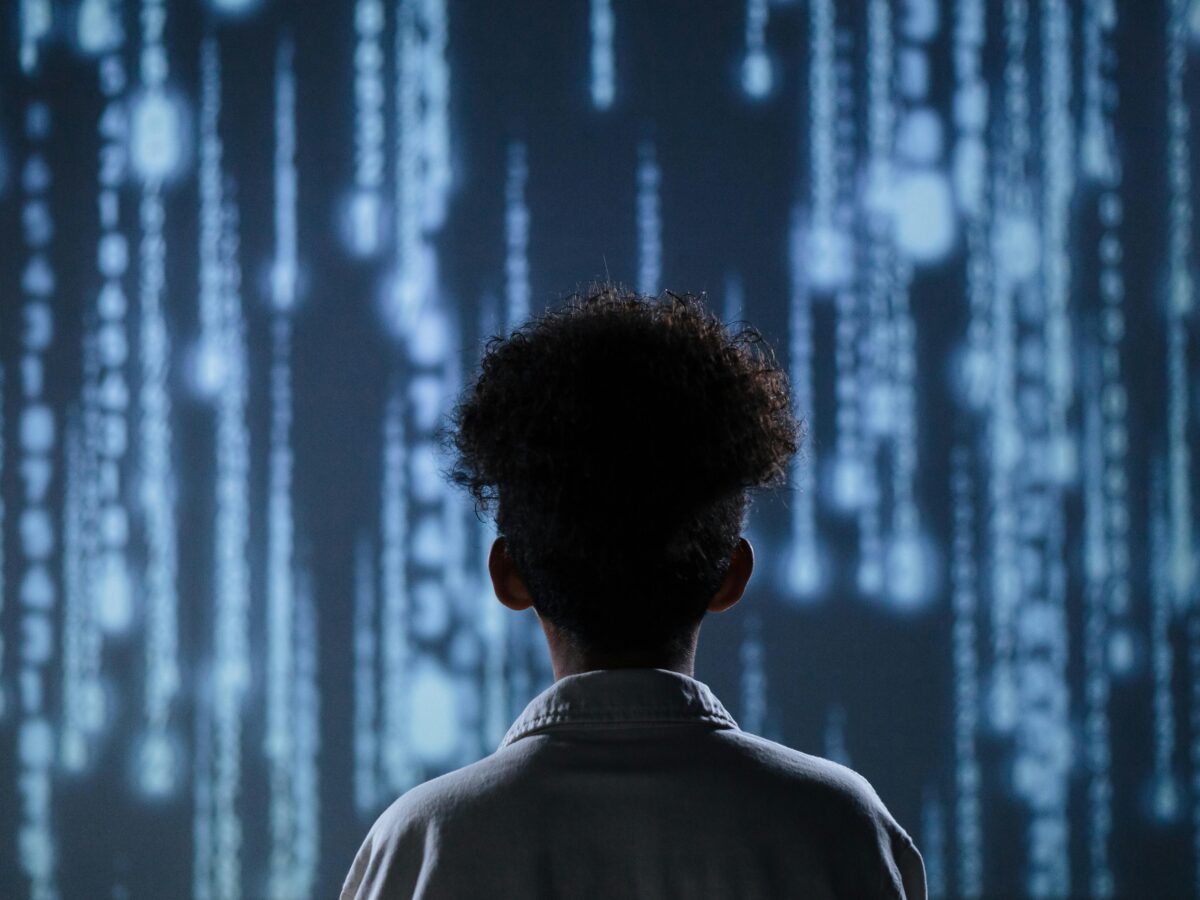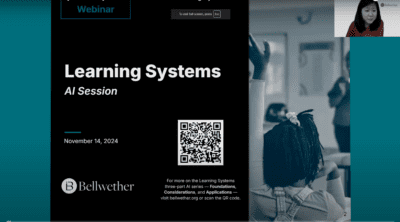
As a superintendent of a public school district, I (Stan) receive a dozen emails every day from companies insisting that their newest artificial intelligence (AI)-powered education technology (“ed tech”) will make educators’ jobs easier, improve student learning outcomes, and likely end global poverty while doing so.
With so much hype generated around the topic — a whole industry has emerged for tracking, understanding, and applying the latest AI platform — it is tempting to settle toward two extremes: an obsession to stay ahead of the curve for the good of one’s staff and students, and a nihilism which recognizes that the curve will always be ahead of us.
At Granville County Public Schools (GCPS), we are using this moment to push for a more cautious posture. A craft thousands of years in the making — education — need not fundamentally change in a few years or months. In fact, it shouldn’t.
Why adopt such skepticism?
Firstly, history suggests that the proposed benefits of technology are often greater than reality. For instance, a recent marketing email insisted that AI tools are already saving teachers “an average of 5.9 hours per week.” It is hard not to read such a claim against the historical evidence that so-called “labor-saving devices” rarely save us labor. Nature abhors a vacuum, and somehow new work will always appear in the space opened by such devices — indeed, it is often the devices which fill that space.
![]() Sign up for the EdWeekly, a Friday roundup of the most important education news of the week.
Sign up for the EdWeekly, a Friday roundup of the most important education news of the week.
The ‘technological cascade’
In the 1990s, the advent of email promised less time dealing with messages and more time for meaningful work or life, and yet email has turned into a 24/7 expectation, blurring boundaries between work and personal time. In the 2010s, myriads of productivity apps promised to help us organize life and make room for what’s important, yet smartphones introduce constant interruptions and distractions. There is nothing to suggest that AI-powered ed tech will be different.
Further, we’re reminded of the “technological cascade,” a pattern commonly seen when new technologies are introduced. First, new technology addresses a specific need by enhancing some efficiency, and by doing so it leads to a shift in how that need is understood and evaluated. As the new standard takes hold, the previous, pre-technological method begins to seem outdated and insufficient.
Quickly, decisions surrounding the use and expansion of the technology become primarily driven by the goal of maximizing its efficiency. In turn, the designers of the technology begin reshaping the surrounding environment to better accommodate its use, resulting in what technology theorist Neil Postman described as an “ecological shift.”
As technology becomes more deeply embedded in daily life, the secondary benefits and skills associated with the older method gradually diminish. Ultimately, this progression creates a widening gap between those who have access to technology and those who do not.
There’s no reason to think this cascade will not occur with AI in the classroom. Initially introduced to streamline teaching and improve learning outcomes, AI tools will likely redefine what it means to “learn” or “teach,” often prioritizing quantifiable outcomes — such as speed, accuracy, or standardized mastery — over deeper, relational, or exploratory aspects of education.
As these tools become the new standard, traditional practices such as face-to-face mentorship, open-ended inquiry, or the slow cultivation of critical thinking will likely be seen as inefficient or obsolete.
Students are relational, dynamic, whole beings
Ultimately, the inundation of AI-powered ed tech has prompted us to return to a few basic principles of humanistic education. First, we acknowledge that students are inherently relational — they learn in and through their connections with others. Our behaviors and habits often mirror those of the people around us, and our capacity for love and inspiration is sparked by witnessing these qualities in others.
A student will rarely be inspired to become proficient in math if they do not see a love for math in their teacher — someone who both cares for them and a model to which they can aspire.
Secondly, students are dynamic; they grow by persisting through challenges — there are no shortcuts to real development, education especially. Where AI-empowered ed tech enables the easier processing of information among learners — the primary work they are built for — this is necessarily a step back for the education of that learner.
Finally, students are whole beings — complex integrations of mind, body, soul, and heart — who cannot be reduced to isolated parts for true education to occur. As is obvious, AI primarily manifests in digital platforms (i.e., screens), which will have the tendency to make the work of education even further disembodied and disconnected to the dynamism of encounters in the real world.
Intentional, meaningful integration
Technologies promise to “solve” our problems, but often by presuming such problems exist or by inventing new ones. At GCPS, we presume that AI will not improve education, and we force it to prove beyond reasonable doubt otherwise (if it ain’t broke, don’t be eager to fix it).
Where we currently experience challenges, our presumption is that already-existing strategies — primarily the creativity and resourcefulness of GCPS staff — can be leveraged to solve them without additional technological gimmicks. Instead of full-scale adoption of AI applications, we lean towards a slow, staggered implementation (over years, not months), assuaging guilt and frenetic stress otherwise likely to be felt.
To be clear, in GCPS, we’ve made sure that a volunteer task force of GCPS staff are busy learning and researching the latest and greatest AI tools. We are not sticking our heads in the sand. But we cannot blindly follow the trends and pressures that are building. We allowed this to happen with unlimited screen time and smartphone usage in our schools, and we see where that got us.
As a result, GCPS, along with districts across the country are ratcheting down cellphone use and even the use of technology in general. GCPS is launching “Tech-free Tuesdays and Thursdays” this school year, forcing all students to go analogue two days a week. We are paying attention to the growing body of research and public sentiment and taking action — not because we are anti-technology, but because we are pro-learning and pro-student.
Ultimately, a cautious posture ensures that the use of AI meaningfully contributes to what education is for — the well-being and learning outcomes of students (for which we have established wisdom and metrics) — not the efficiencies of the technology (or its expensive systems), which we neither have the time nor money to bother with.
Recommended reading




